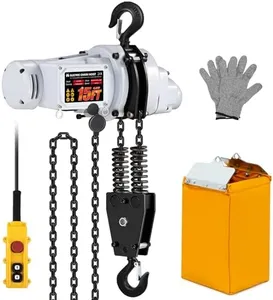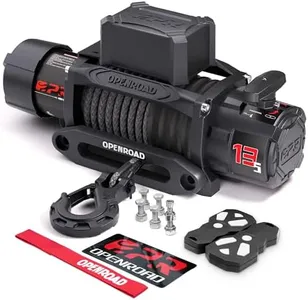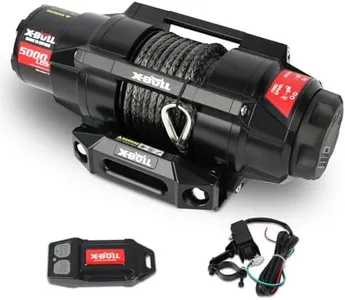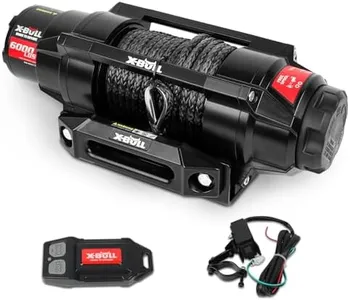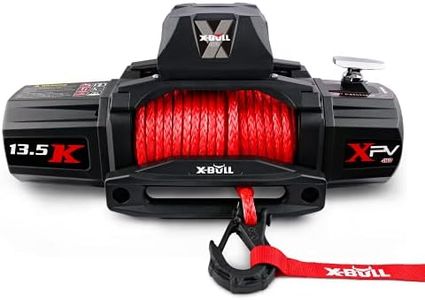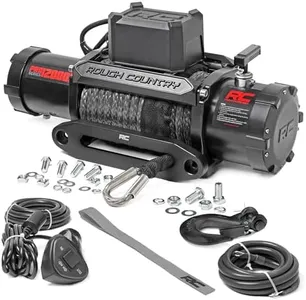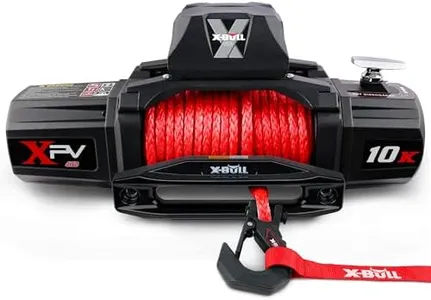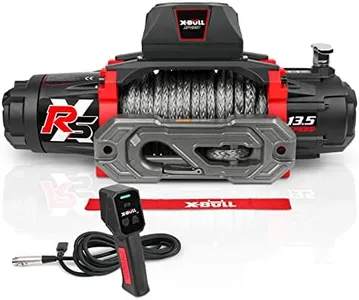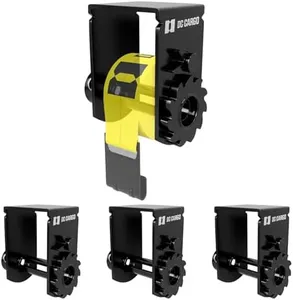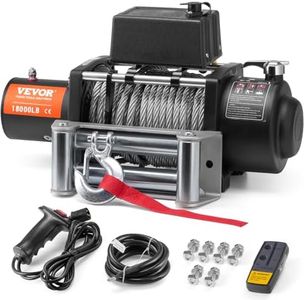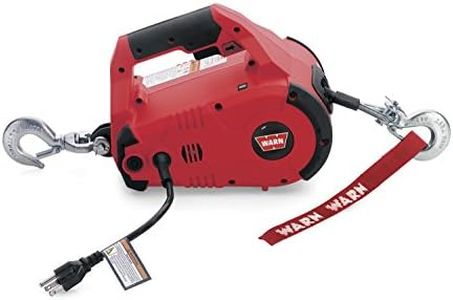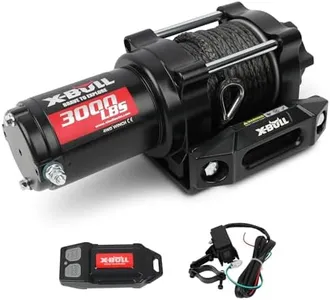10 Best Electric Winches 2025 in the United States
Our technology thoroughly searches through the online shopping world, reviewing hundreds of sites. We then process and analyze this information, updating in real-time to bring you the latest top-rated products. This way, you always get the best and most current options available.

Our Top Picks
Winner
OPENROAD 13500 lb Recovery Winch with Synthetic Rope and 2 Wireless Remotes - IP68 Waterproof 12V Electric Winch for Jeep, SUV, Truck & Trailer - Panther Series 3S
Most important from
69 reviews
The OPENROAD 13500 lb Recovery Winch is a solid choice for those needing a heavy-duty winch for trucks, SUVs, jeeps, or trailers. Its strong 13,500 lb load capacity and durable 3/8" synthetic rope measuring 85 feet make it reliable for pulling heavy loads without the risk of rope damage that steel cables can have. The winch is designed with corrosion-resistant materials, which helps ensure long-lasting performance even in tough outdoor conditions.
Control options are versatile, as it includes both wired and two wireless remotes, allowing flexible operation from a distance. Installation is straightforward if your vehicle has the standard bolt pattern (10" x 4.5"), and it fits most front bumpers or winch brackets, though its size means you should check for enough space before mounting. The winch comes mostly assembled, so setup won’t be complicated for most users. Weighing 50 pounds, it is fairly heavy but this is typical for winches at this capacity.
Backed by a one-year warranty and lifetime tech support, this winch offers good peace of mind. If you need a dependable, powerful winch with modern synthetic rope and remote controls, this model fits the bill well, especially for off-road and trailer recovery tasks.
Most important from
69 reviews
X-BULL 5000lbs Electric Winch - 12V DC Power Waterproof Synthetic Rope Winch with Hawse Fairlead, Wireless & Wired Remote with Mounting Plate for ATV/UTV,Boat Trailer Winch
Most important from
93 reviews
The X-BULL 5000lbs Electric Winch offers a solid performance with its robust 12V DC motor and 3-stage planetary gear system, which provides good torque and efficiency. The load capacity of 5000lbs makes it suitable for ATVs, UTVs, boat trailers, and other off-road vehicles. The full-load line speed of 3.3 feet per minute ensures that it can handle recovery tasks relatively quickly. The synthetic rope included is durable and has high tensile strength, making it ideal for tough conditions.
Moreover, the winch's IP68 waterproof rating enhances its durability, protecting it from harsh environmental elements. Installation is straightforward due to its compact design and detailed manual, which simplifies the setup process. The winch comes with versatile control options, including a wireless remote with a 100-foot range and a wired pendant controller, offering flexibility and ease of use. The package also includes extended battery cables, which further simplifies the operation.
One notable advantage is its robustness and reliability, making it an essential tool for off-road enthusiasts. However, it is relatively heavy at 27.55 pounds, which could be a drawback for those looking for a lighter option. Additionally, while the winch is designed for various recovery scenarios, the reliance on a 12V power source might limit its use to smaller vehicles and tasks. In summary, the X-BULL 5000lbs Electric Winch is a powerful and reliable option for those needing a versatile winch for off-road activities, with minor considerations regarding its weight and power source.
Most important from
93 reviews
X-BULL New 6000LBS IP68 Waterproof Electric Winch Boat Trailer Winch with 2 in 1 Wireless Remote Synthetic Rope 1/4 in x49.8ft Hook Automatic Braking Powersports Off Road
Most important from
93 reviews
The X-BULL New 6000LBS IP68 Waterproof Electric Winch is an excellent choice for boat trailers and off-road powersports. Its 6000lbs load capacity and powerful 1.3 HP motor ensure it can handle heavy tasks efficiently. The winch achieves a full-load line speed of 2.9 feet per minute and an impressive no-load speed of 19.7 feet per minute, making it suitable for various applications.
Additionally, the 49.8-foot synthetic rope is durable and less prone to rust compared to steel cables, enhancing safety and longevity. The device's IP68 waterproof rating provides the highest level of protection against water and dust, ensuring reliable performance in all environments. With both wired and wireless remote controls, users can choose the level of precision and convenience they need, up to a 100-foot range.
The included fairlead, mounting bracket, and multiple cables offer versatile installation options, making the setup straightforward. The 3-stage planetary gear system and clutch system provide robust power and reliability, ensuring smooth operation even under demanding conditions. This winch is ideal for those needing a powerful, versatile, and waterproof solution for heavy-duty tasks in various environments.
Most important from
93 reviews
Buying Guide for the Best Electric Winches
Choosing the right electric winch can make a significant difference in your projects, whether you're using it for off-roading, industrial purposes, or marine applications. The key to selecting the best electric winch for your needs is understanding the various specifications and how they relate to your specific requirements. By focusing on the key specs, you can ensure that you get a winch that is powerful, reliable, and suitable for the tasks you have in mind.FAQ
Most Popular Categories Right Now
